The Polo Grounds was located in Harlem, New York, at 157th Street and 8th Avenue. Various incarnations of ballparks at that location were home to three different major league teams: the National League New York Giants from 1891 to 1957, the New York Yankees from 1913 to 1922, and the New York Mets in 1962 and 1963, as well as a team from the Players’ League in 1890 also known as the Giants) . Prior to 1890, a sports venue known as the Polo Grounds was located in Manhattan near Central Park, and a second venue, also known as the Polo Grounds, was located at 155th Street and 8th Avenue on a plot adjacent to the Polo Grounds at 157th Street.
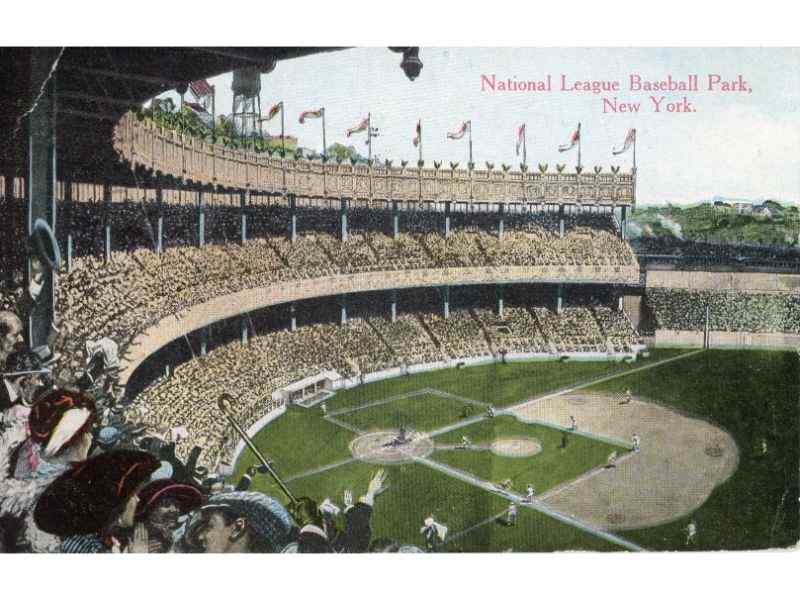
The original wooden ballpark at 157th Street was destroyed by fire in 1911 and a new concrete and steel ballpark was constructed on the site.
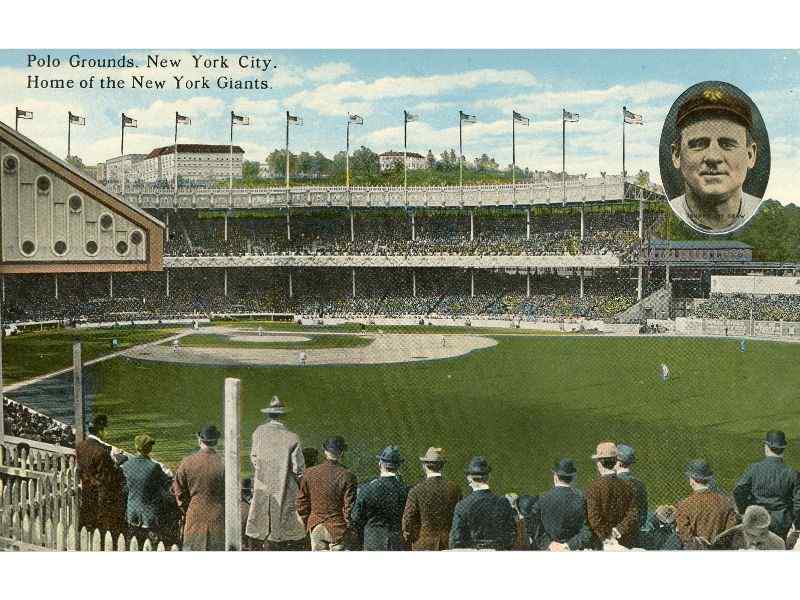
The new Polo Grounds were the third concrete and steel ballpark in the country.

Coogan’s Bluff (not to be confused with the movie of the same name starring Clint Eastwood) was located northwest of the Polo Grounds just beyond home plate at 155th Street and Edgecombe Avenue. The playing field of the Polo Grounds sat in Coogan’s Hollow
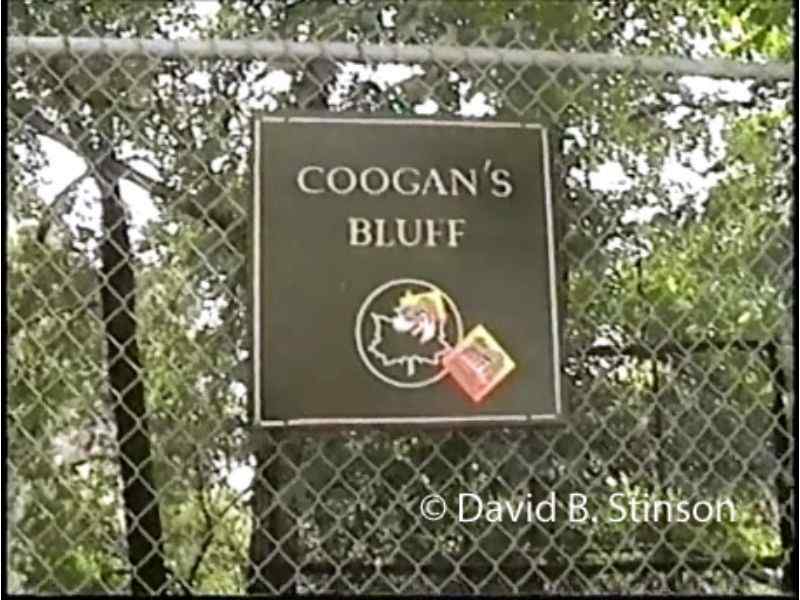
Rock outcroppings just northwest of the ballpark at Harlem River Driveway (which dissects Coogan’s Bluff) provided an excellent vantage point for free viewing of at least portions of the ball field.
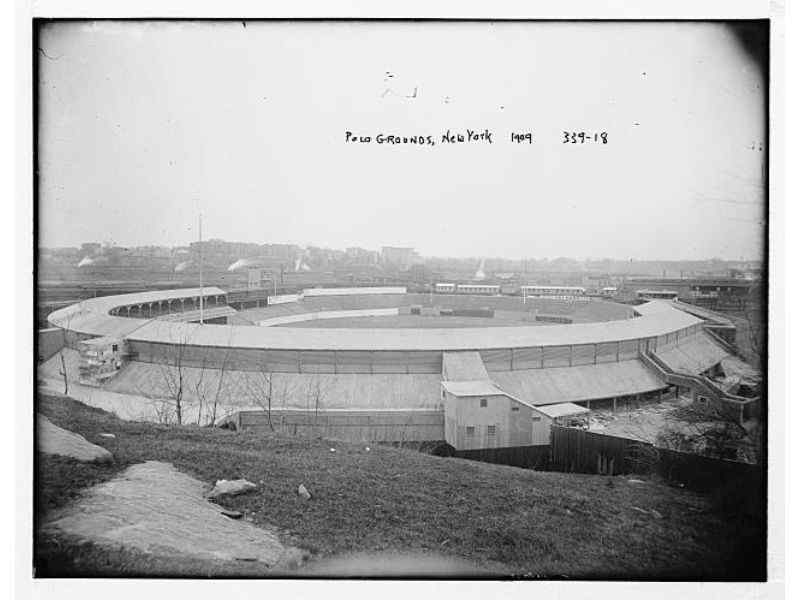
Those rock outcroppings remain to this day along Harlem River Driveway, providing an excellent view now of Polo Grounds Towers.
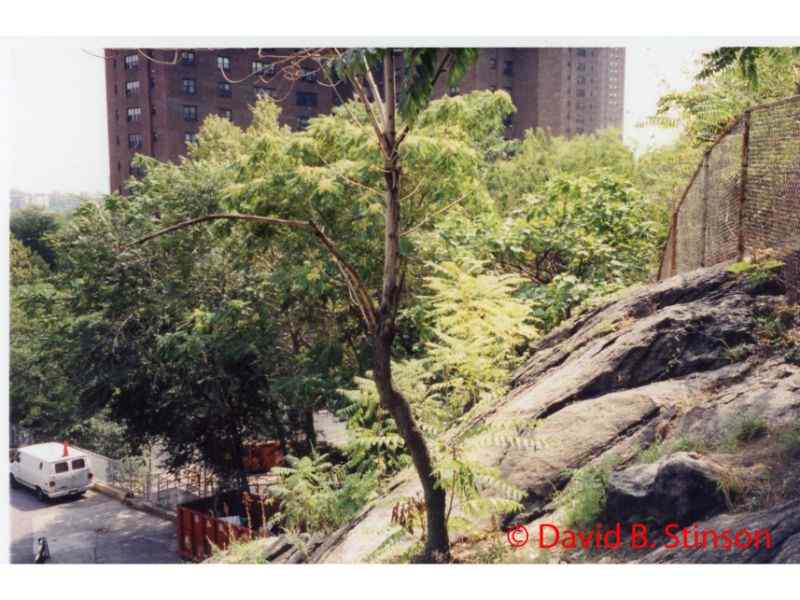
In 1913 a stairway at 157th Street and Edgecomb Avenue in Harlem was constructed to allow subway riders who departed the 155th Street station more direct access to the ballpark at Harlem River Driveway. That stairway remains, a lasting baseball relic of the Polo Grounds at its former site.
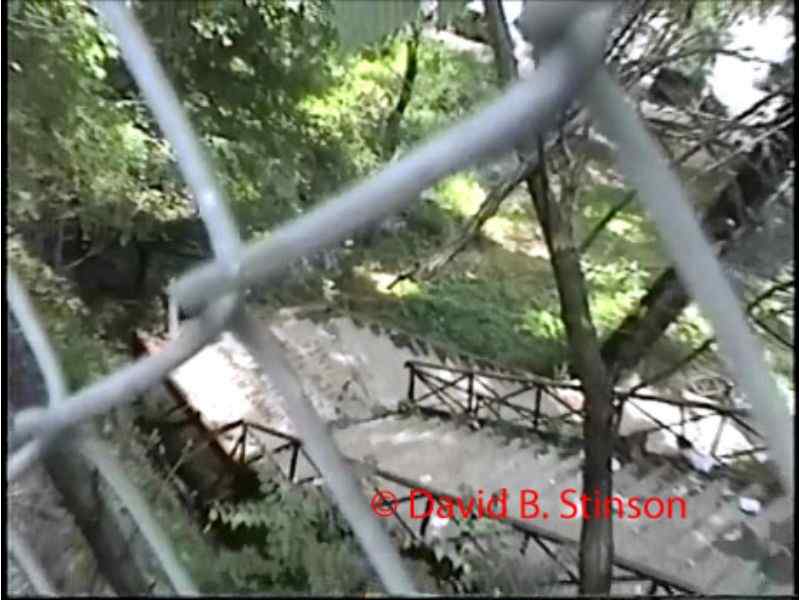
The stairs, whose inscription states “The John T. Brush Stairway Presented by the New York Giants,” was dedicated in 1913 to the former Giants’ owner.
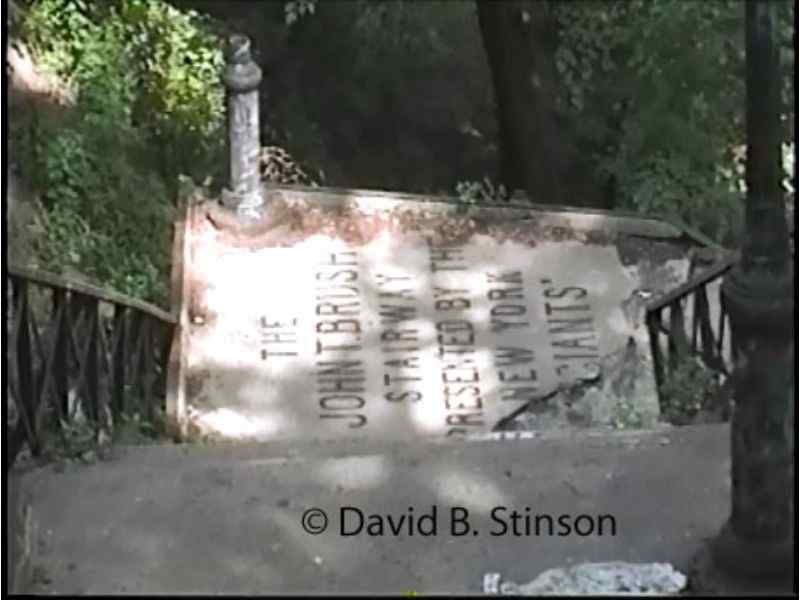
The Brush Memorial Stairway emptied onto the sidewalk at Harlem River Driveway, allowing fans direct access into the Polo Grounds from Harlem River Driveway.

A second stairway that would have taken fans north of the ballpark at ground level still exists alongside Harlem River Driveway.
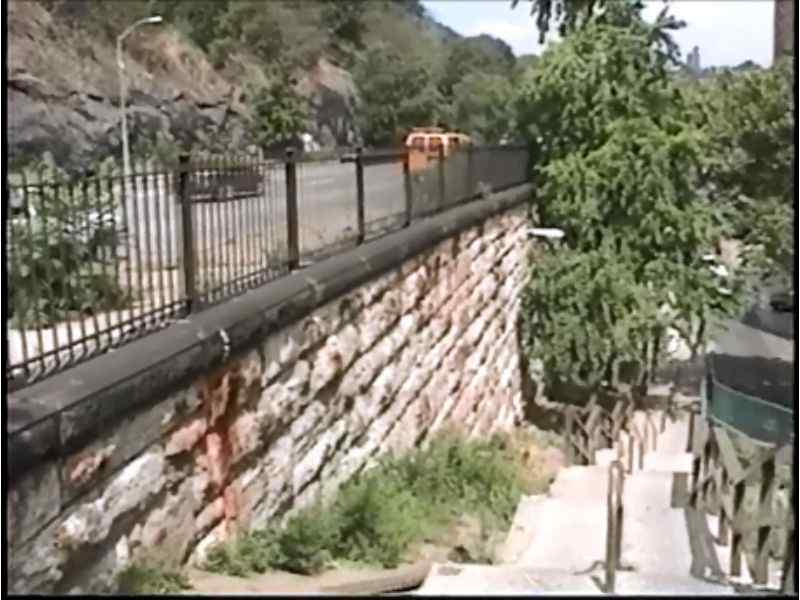
Old Yankee Stadium was located southeast of the Polo Grounds, just across the Harlem River.
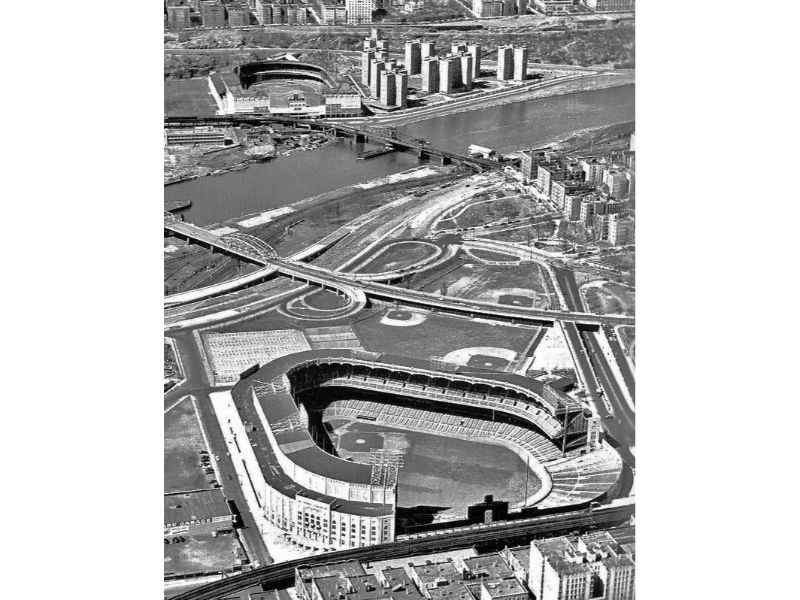
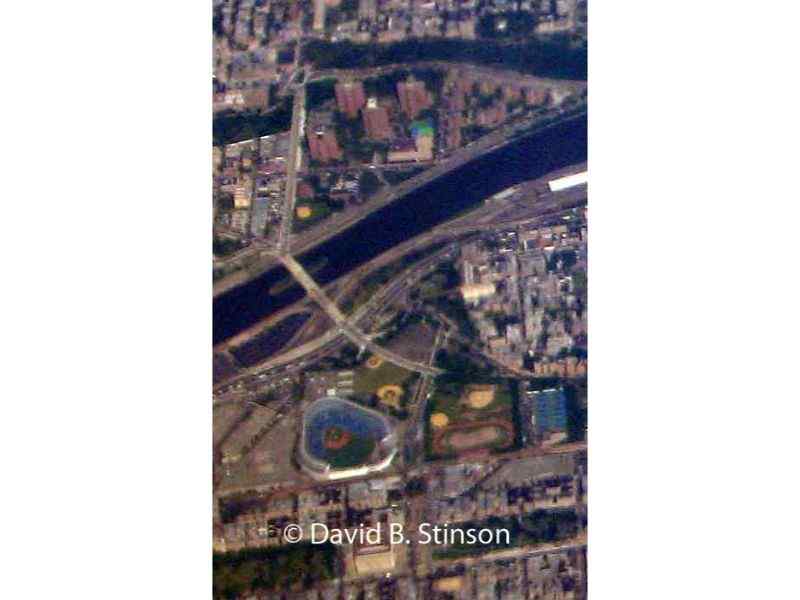
In 1923, Yankee Stadium was visible from inside the Polo Grounds, across the Harlem River.
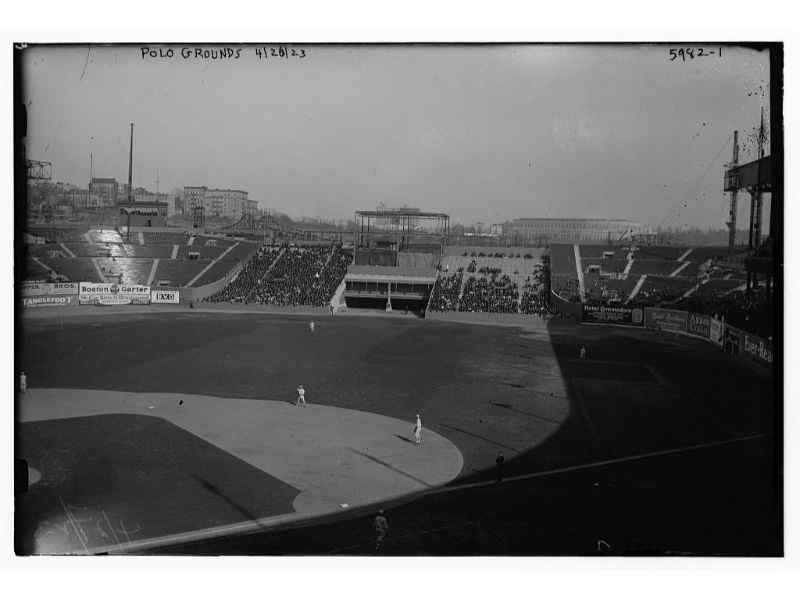
Prior to its demise in 2009, Old Yankee Stadium was still visible from Coogan’s Bluff at Harlem River Driveway looking southeast past the Polo Grounds Towers.
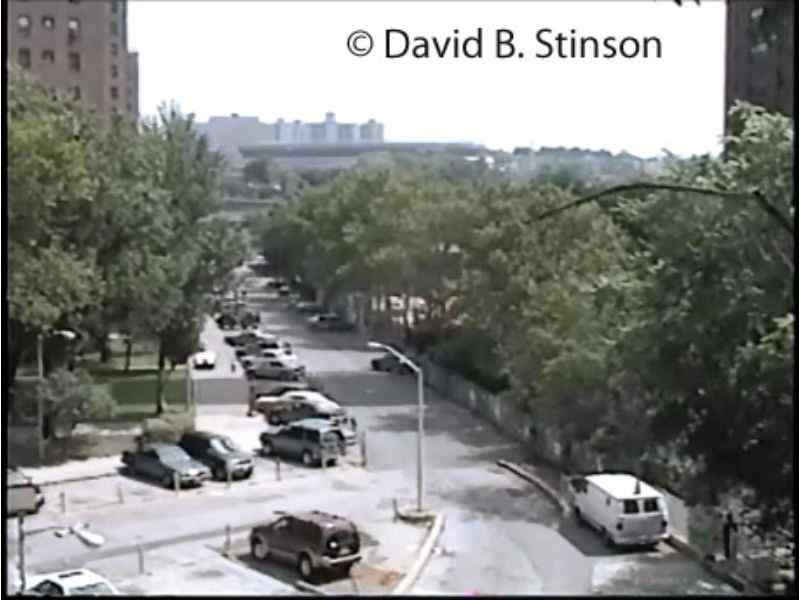
The Polo Grounds Towers, which were built on the ballpark’s former site and completed in 1968, consist of four high rise apartments with a total of over 1600 units.
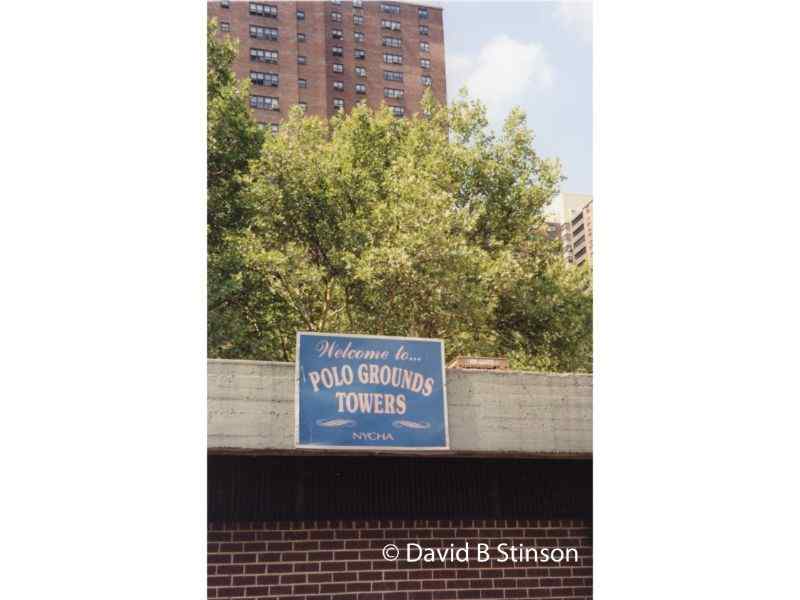
A plaque marking the approximate location of home plate is located on a column of Tower No. 4.
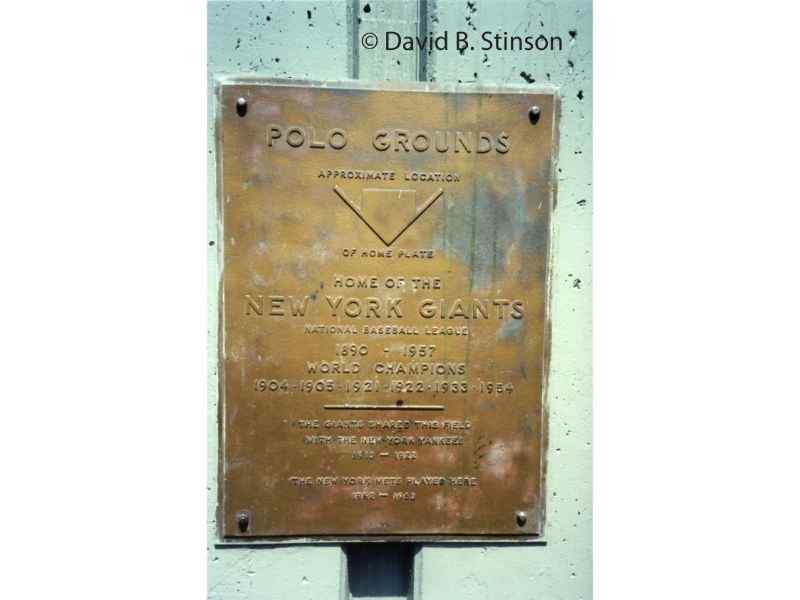
The apartment building located at 155 Edgecombe Avenue is visible from the former location of home plate looking back toward Coogan’s Bluff.
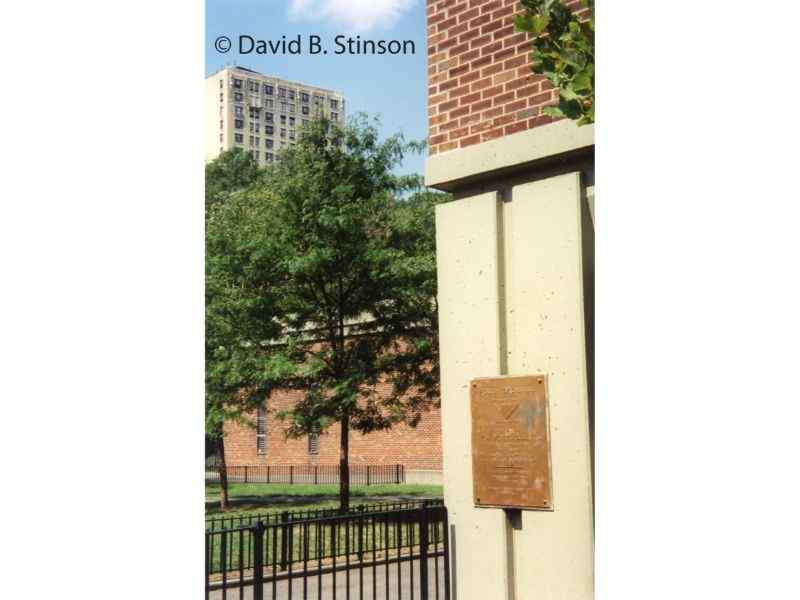
A sliver of that same apartment building is visible in top right corner of the postcard below.

The New York Giants abandoned the Polo Grounds in 1957, moving to San Francisco and Seal Stadium in 1958 and then Candlestick Park in 1960. Subsequent to the Mets move to Shea Stadium in 1964, the Polo Grounds was demolished.
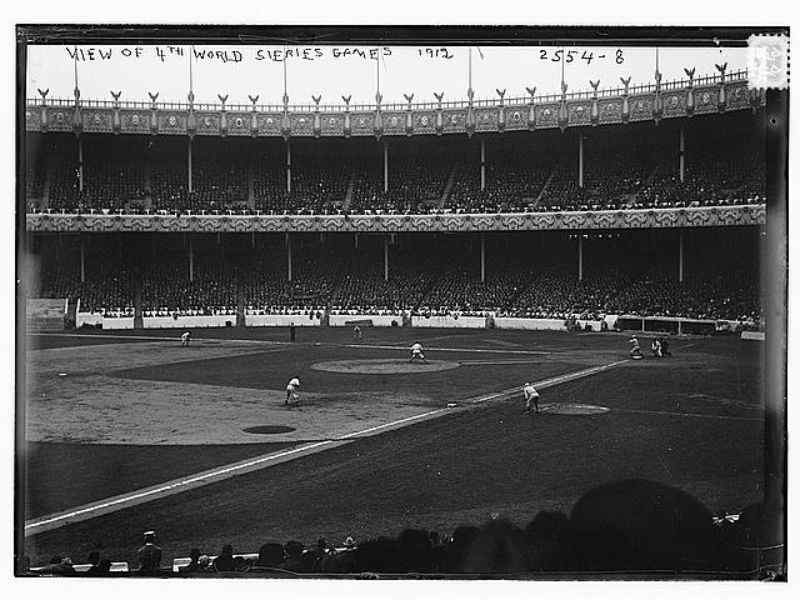
Although nothing remains at the actual ballpark site, the Brush Memorial Stairway does provide a link to the past. The stairway has sat in obscurity and disrepair for years, however an effort is now underway to restore the stairway and, with it, a piece of New York’s baseball past and baseball glory. See MLB.com article about restoration of John T. Brush Stairway [Editor’s Note: The Brush Memorial Stairway has been restored and is open for use. Woods surrounding the stairway have been turned into a small park with lighting, making the stairway quite accessible. A sign has been placed on Edgecombe Avenue at the entrance to the stairway.]
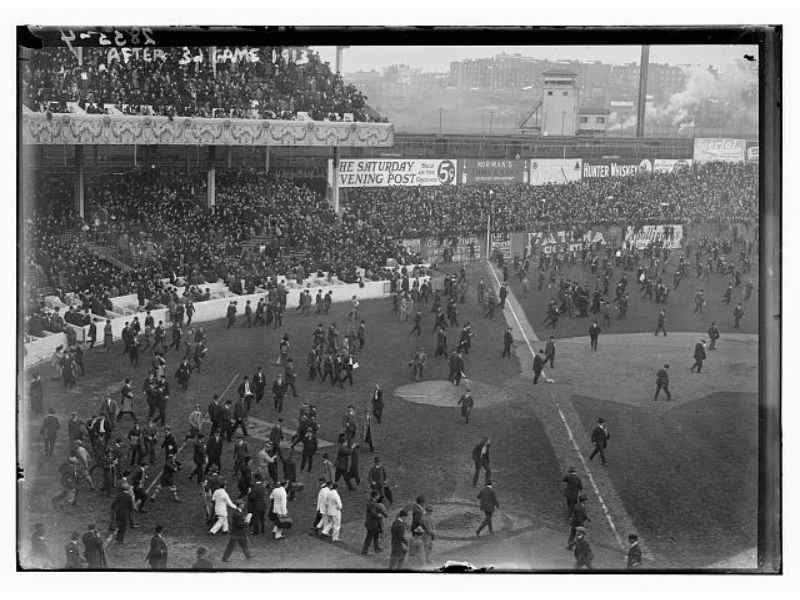
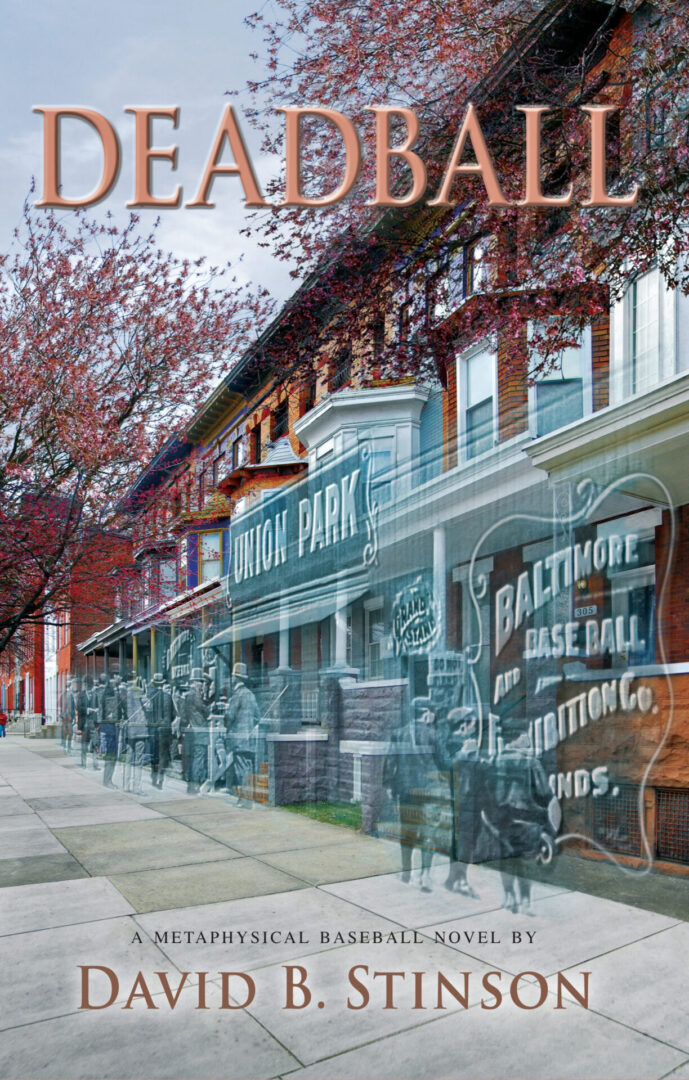

[…] appears at the beginning of this blog. Although not quite as historically significant as the John T. Brush Memorial Stairway located near the former site of the Polo Grounds, the fence certainly is worth noting given […]